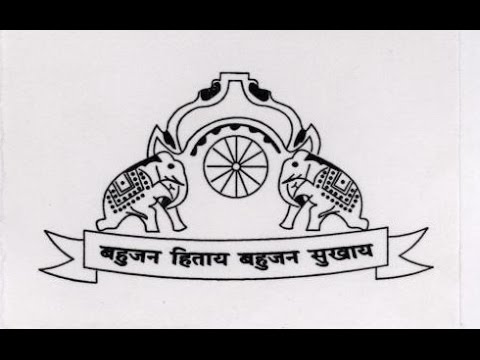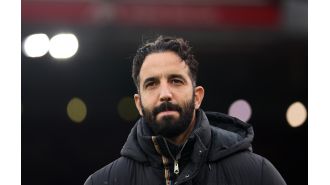Bahujan Hitaya Bahujan Sukhaya
Bahujan Hitaya Bahujan Sukhaya

July 23 is National Broadcasting Day. On this day in 1927, radio broadcasting was formally started for the first time in our country. If we look at it that way, radio broadcasting activities in India peaked in the 1920s. Some amateur private organizations in Bombay and Calcutta at that time started singing the beginning of the radio era. In practice, the first radio broadcast was made from the top of the Times of India building in Bombay in 1921. But even then, India had not received a license for radio broadcasting. The license was received in 1922. The following year, the Bombay Amateur Radio Club began its work. Five years after the license was received, radio broadcasting in India started in an institutional and systematic manner on July 23, 1927. A private company was formed under the name of the Indian Broadcasting Company (IBC) and started broadcasting from Bombay with the permission of the then British government. Lord Irwin, the British Viceroy in India, inaugurated this radio station. Thus, radio broadcasting was officially born on July 23. A month later, radio broadcasting began from Calcutta on August 26. However, within three years of the IBC's start, it ran into financial difficulties. Due to this, the British government decided to revive this private company. The government took over the responsibility of the IBC broadcasting system and started broadcasting under the name of the Indian State Broadcasting Company (ISBC) in 1930. Lionel Fielden, the first controller of this company, renamed it All India Radio (AIR) on June 8, 1936.
The first radio broadcast in Karnataka (then Mysore State) was started in Mysore, the cradle of music, literature and culture. Dr. M.V. Gopalaswamy, who was a professor of psychology at the University of Mysore, started a radio station at his residence in Ontikoppal on K.R.S. Road. This private radio station started broadcasting on September 10, 1935. This station was established by installing a 30-watt transmitter that Gopalaswamy had purchased from abroad at his own expense. Among those who joined Gopalaswamy's efforts, the services of renowned writers such as N. Kasturi, A.N. Murthyrao and others were significant. The first radio broadcast was broadcast by the national poet Kuvempu reciting poetry. In those days, when the facilities of radio sets were not widely available, a loudspeaker was attached to the large clock tower near the Mysore Town Hall and arrangements were made for the public to listen to the programs. Thus, the Mysore Radio Station has the distinction of being the first private radio station in India established by a single person. G.P. Rajaratnam was the one who used to tell stories and poems to children in the experimental radio broadcast of that time. The first musical program broadcast in those days was the singing of Mysore Vasudevacharya. Maharaja Nalvadi Krishnaraja Wodeyar of Mysore was present at the assembly of Maharaja's College and heard the sound coming in waves on the radio.
The invaluable contribution of Mysore Radio Station to the Indian broadcasting system is its introduction of the name 'Akasavani'. In order to find a suitable name for the radio station, Gopalaswamy called several professors of Maharaja's College, Mysore and discussed it, and it was Na. Kasturi who suggested the name Akashavani to him. Later, on the advice of the famous Hindi writer and poet Pandit Narendra Sharma, the Government of India renamed the 'All India Radio' as Akashvani in 1956. Thus, it is a matter of pride that the Kannadigas gave the name 'Aakashvani' in the history of the Indian broadcasting system.
In the early days after independence, the number of radio stations in India was only six. Delhi, Bombay, Calcutta, Madras, Tiruchirappalli, Lucknow stations. The Constitution of India came into force on 26 January 1950. Accordingly, Akashvani came under the complete control of the central government. In the following years, the government established radio stations in many parts of the country. Today, radio programs reach every household in several regional languages of the country and the medium called Akashvani is one of the largest broadcasting networks not only in India but also in the world. Akashvani, which has successfully passed through the same stages of the broadcasting system, has gained public recognition through its different programs. The National Music Programme was started in 1952 and the All India Radio Music Conference in 1954. In 1957, to compete with the entertainment programmes of Radio Ceylon, the broadcasting of the Vibhavid Bharati programme was started from the Mumbai Nilayam. In 1977, on the occasion of National Broadcasting Day, the first FM station was started in Madras. In 1984, the first community radio station was established in Nagarkoli, Tamil Nadu. The year 1997 was a significant year for radio and TV. In the same year, the Central Government enacted the Prasar Bharati Act, which gave autonomy to the media and freed it from government controls. As a result, All India Radio and Doordarshan stations gained full autonomy.
TV Although the number of listeners of Akashvani, which used to be the king of voice communication, had declined somewhat due to the boom in media, cable, internet, and DTH broadcasting systems, Akashvani regained its strength in the 2000s with the entry of private radio stations. New FM stations started attracting listeners by creating a new wave.
Today, there are many private radio stations in Karnataka, including 14 major radio stations. The oldest stations, along with the Bangalore and Mysore radio stations, are Dharwad, Bhadravati, Kalaburgi and Mangalore. The rest are FM stations that started in the 90s. The first FM radio station in Karnataka was Chitradurga (on 3 May 1991). The Hassan station was started within a day of this. In the following years, Hospet, simultaneously Madikeri and Raichur (on 28 August 1993), and then gradually Karwar, Bijapur and Bellary radio stations were started. Although the first radio station was started in Mysore in 1935, in 1955, the machinery and staff there were transferred to Bangalore and Bangalore Radio was formed. The Mysore Radio Station, which was thus closed, was reopened in 1974 after 19 years. The studio design of the Mysore Station, the oldest radio station in Kannada Nadu, was designed in an innovative style by German engineer Otto Konisberg. Sir Mirza Ismail, who was the Diwan of the Mysore State, invited Otto Konisberg to build the radio station. It is unique in that the Mysore Radio Station is the only one in India to have six studios in a hexagonal shape.
All India Radio's various stations have been broadcasting programs in many Indian languages, such as education, health, agriculture, law, sports, literature, etc. for all age groups including children, women, and young listeners, and classical music, devotional music, lyrical songs, folk songs, film songs, speeches, drama, Katha, Yakshagana, all under one roof, for music lovers. The motto of All India Radio is 'Bahujan Hitaya, Bahujan Sukhaya' from the Rigveda. Accordingly, the radio has proclaimed its identity as a universal broadcaster for the welfare and happiness of all, since then and till today. In the Indian broadcasting system, which is on the verge of a century, the huge broadcasting network called All India Radio is both history and present.
Note:This article is translated by xklsv.com, from shakthidaily.info; the Shakthi Daily is not liable for any errors in translation. If there are any errors in spellings, please mail [email protected]





